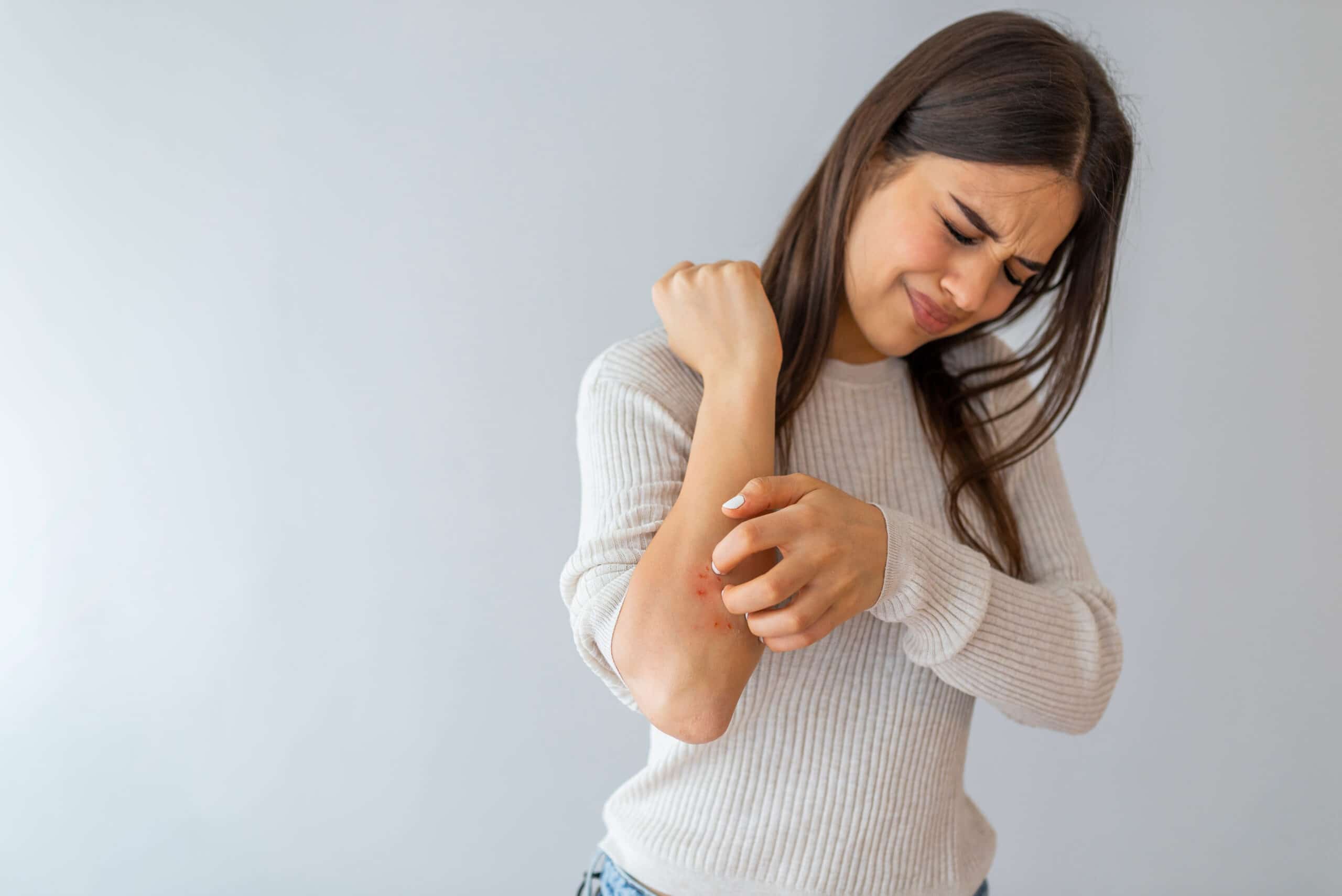
Understanding psoriasis
Psoriasis is a chronic (ongoing) inflammatory skin condition that gets its name from the Greek word ‘psora’, which means ‘to itch’. When someone has psoriasis, they develop raised red patches of skin called plaques that are covered with silvery, flaky skin. Psoriasis can be itchy and can burn and sting. The condition isn’t infectious – so you can’t catch it or pass it onto anyone else. While there isn’t a cure for psoriasis, it can be managed well with medicines and other treatments prescribed by your doctor, and by managing your triggers. Psoriasis can be associated with other serious health conditions, including heart disease and diabetes and can also affect your emotional and social wellbeing. Some people feel self-conscious about the appearance of their psoriasis, and this can cause people to avoid activities like swimming and sports where their psoriasis will be seen. If you have psoriasis, it’s important to work closely with your doctor to learn more about your condition, how you can best manage it, and where you can find support. This can have a positive effect on how you feel.
Psoriasis comes and goes and is different for everyone
Psoriasis is a life-long condition that can come and go at any time. Most people with psoriasis will have times when their condition is more severe (a flare or flare-up) followed by times when their symptoms are mild or they have none at all (a remission). How severe psoriasis is also varies greatly from one person to another. In Australia and New Zealand, doctors divide psoriasis into two main groups:
- Mild to Moderate
- Severe
This grading is based on a combination of the appearance of the plaques, the area they cover and how psoriasis affects quality of life. Classifying psoriasis like this helps doctors to work out a treatment plan and also to monitor your treatment progress.
What does psoriasis look and feel like?
There are five main types of psoriasis. Your doctor will diagnose which type you have and work out a treatment plan with you.
- Plaque psoriasis is the most common type of psoriasis affecting about 90 per cent of people with the condition. It’s recognised by its telltale plaques: patches of thick, red skin that are covered with silvery white scales. Plaques can come in all shapes and sizes, and their edges usually have a clear border separating them from the skin around them. They are often itchy and can crack and bleed. Plaque psoriasis most commonly affects the front of elbows and knees, the scalp and the lower back.
There are several other types of psoriasis:
- Guttate psoriasis causes many small teardrop shaped plaques to appear over the body. It often affects children and young adults and is usually triggered by a virus or strep throat infection. Guttate psoriasis is the second most common type of psoriasis and about 10% of people who have it go on to develop plaque psoriasis.
- Inverse psoriasis is where patches of very red skin appear in body folds and where skin rubs together: behind the knees, under the arms and breasts, in the groin, belly button and ears, and between bottom cheeks. The patches are usually smooth and shiny without scales. People with inverse psoriasis often have another type of psoriasis on a different part of their body at the same time.
- Palmoplantar psoriasis affects the palms of the hands or the soles of the feet with scaling, redness and sometimes with small pus-containing blisters.
- Other rare and serious forms of psoriasis include pustular and erythrodermic psoriasis.
How is psoriasis diagnosed?
There aren’t any specific blood tests or other tests to diagnose psoriasis. Your doctor can usually diagnose psoriasis by examining your skin. Sometimes, they may take a very small piece of your affected skin (a biopsy) and look at it under a microscope to look for changes that suggest psoriasis and look different from other skin conditions. Your doctor will also be interested in your family’s medical history – as about one-third of people with psoriasis have a family member with the condition.